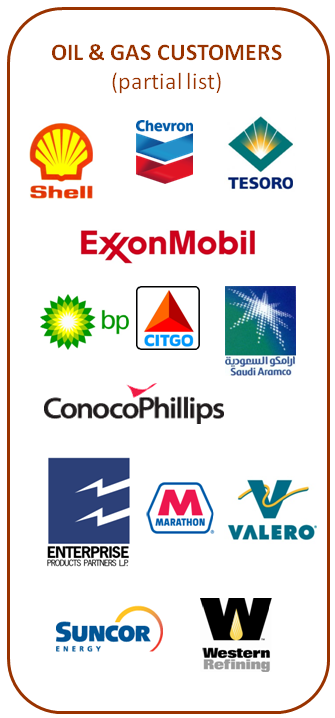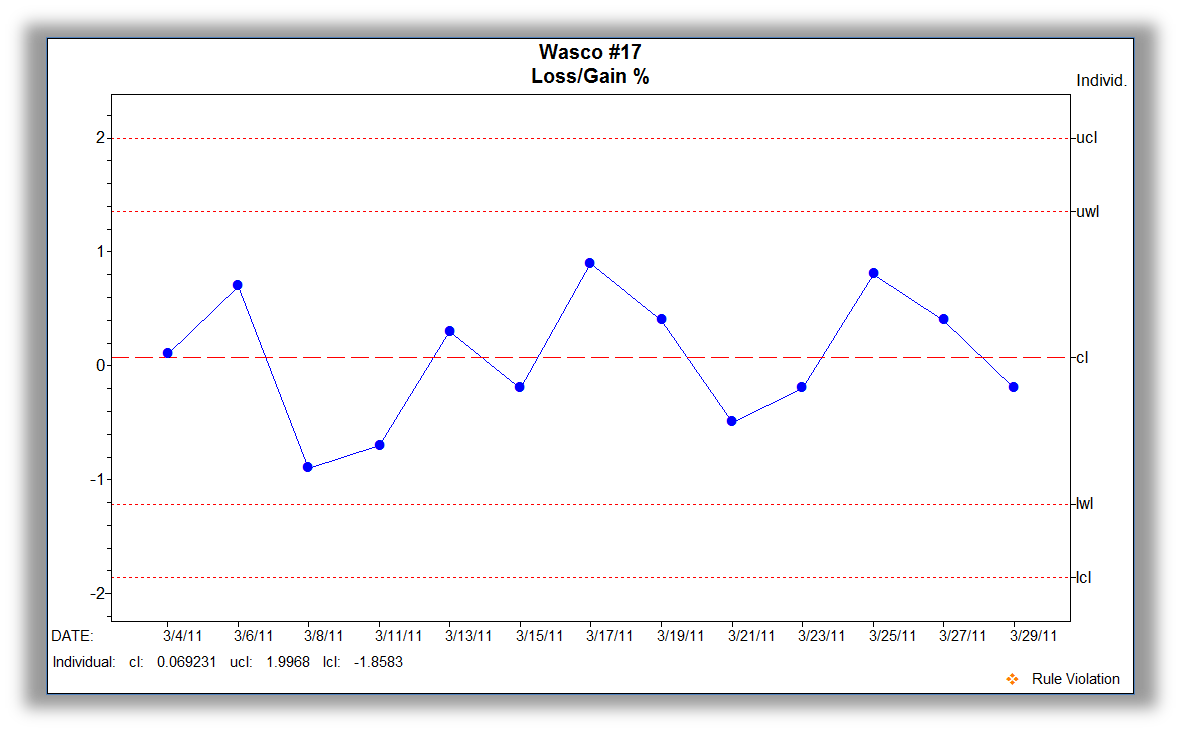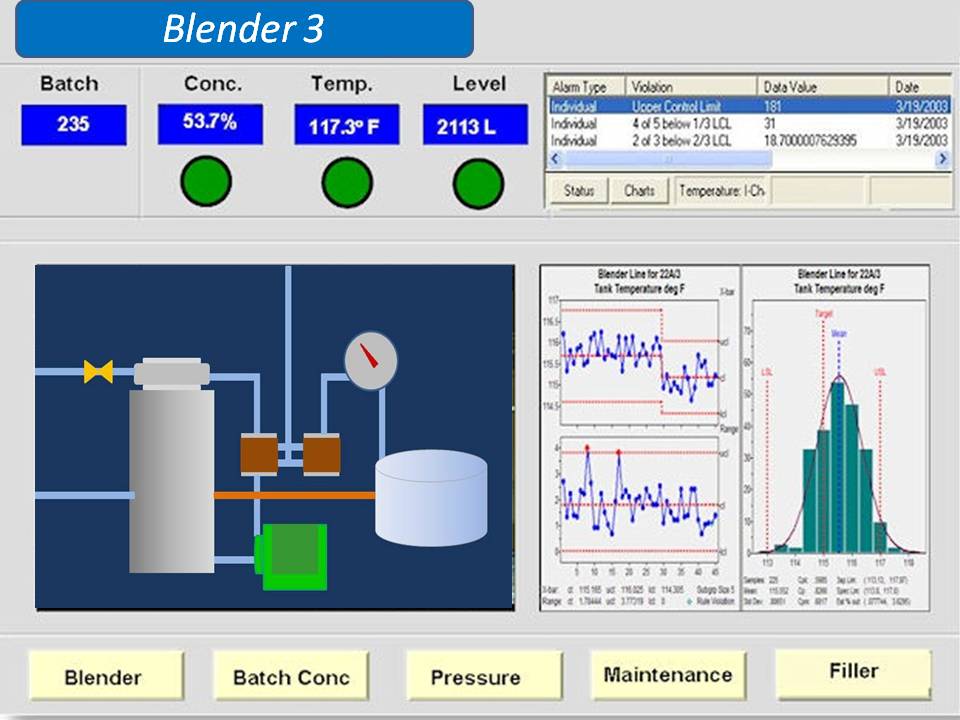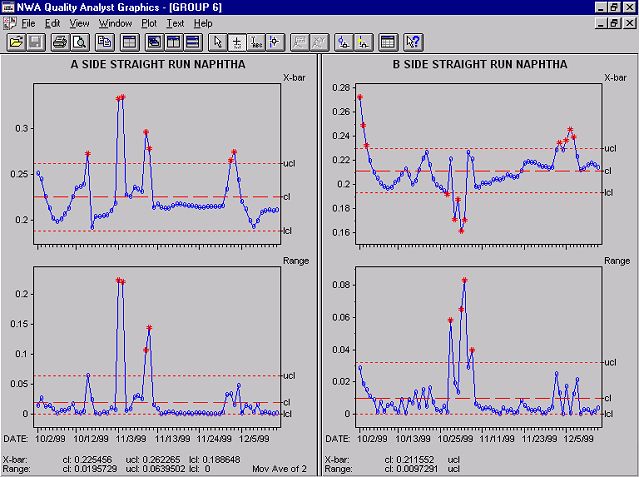Oil & Gas
Oil & Gas Industry Solutions
 From the wellhead to the refinery, process monitoring and management are critical to efficient, high yield production. Manufacturing-intelligence solutions from NWA deliver awareness by providing each stakeholder exactly what they need to monitor and optimize their operations.
From the wellhead to the refinery, process monitoring and management are critical to efficient, high yield production. Manufacturing-intelligence solutions from NWA deliver awareness by providing each stakeholder exactly what they need to monitor and optimize their operations.
NWA solutions integrate operational management with process improvement to increase profitability while reducing risks to performance. As a part of the "Digital Oilfield", NWA's enterprise solutions enable producers to:
- Control processes with high cost or loss potential;
- Track equipment performance and energy consumption;
- Evolve into predictive from reactive process management to provide the most effective process control and quality improvement program possible;
- Provide analytics and oversight for total asset, distribution and process management.
“... highly instrumented assets and the capability to collect, analyze and visualize information in real time have enabled fundamentally new cross-functional and collaborative workflows, so that there can be asset-level decision making and optimization across the entire value chain from the hydrocarbon reservoir to product delivery.”
Bakshi and Prasanna, Lessons from Digital Oilfield Initiatives
Data Collection and Integration
Oil and gas operations involve distributed data sources that need to be consolidated and aggregated. The realities of oil and gas data sources include:
- Dispersed geography – covering multiple assets and fields, distribution stations, refineries, etc.;
- Data source variety – includes manual and digital sensors on wells, pumps and distribution lines, refinery process lines, laboratories;
- Data mode variety – includes continuous data from SCADA/ historians, discrete data from field operators’ manual and mobile device data collection and laboratory sample data.
 The wide range of data sources challenges system data aggregation and integration capabilities to meaningfully organize data to support process management and operational decision support. The system must be vendor neutral and database agnostic so it can interface with proprietary data repositories across the oil and gas value chain.
The wide range of data sources challenges system data aggregation and integration capabilities to meaningfully organize data to support process management and operational decision support. The system must be vendor neutral and database agnostic so it can interface with proprietary data repositories across the oil and gas value chain.
NWA software has been interfaced with all major SCADA, historians and manufacturing systems. With NWA’s superior data interchange capabilities, data from upstream assets, distribution, manufacturing, and operations databases can be aggregated for a comprehensive process view and collaborative management.
The system must be able to align data from various modes to provide the context for analysis and operational decision support. For example, continuous data gathered by a SCADA system must be aligned with individual sample values from the laboratory. This includes aggregating and making available a mix of real-time, near real-time and historical data analysis coupled with the ability to centralize large volumes of data.
NWA has developed excellent capabilities to align the disparate data typical of oil and gas operations. Manufacturing-intelligence solutions can dependably process cases such as aligning SCADA and laboratory data to provide context for meaningful analysis.
“One of the key lessons from digital oilfield projects is that the quality of decisions from surveillance, analysis and optimization workflows is ultimately dependent on the quality of the data collected from the field as well as the ability to communicate data in a consistent manner between a large number of IT systems that were never designed to be interoperable.”
Bakshi and Prasanna, Lessons from Digital Oilfield Initiatives
Analytics and Visualization
Given the different process management environments from the field to the cracking tower, management faces major challenges to understand the total process. Data is collected at each step of the production process, but often not well analyzed or made sufficiently visible for good decision support.
| Oil field |
Flow Assurance Total Asset Management |
| Pipeline |
Loss/Gain Tracking Flow Meter Performance |
| Refinery | Process Parameters - e.g. Pressure, Temperature Distillate Yield, Methods Performance |
| Management |
Operational KPIs Facilities Benchmarking |
 Plant process data is gathered by the control system, the laboratory or plant floor data collection. This data must be analyzed and presented to operators and managers in a usable format to get the maximum process management benefit. NWA software delivers SPC-based process analytics whether it is embedded into an operator’s HMI status screen, a certificate of analysis from the lab, or a manager’s dashboard.
Plant process data is gathered by the control system, the laboratory or plant floor data collection. This data must be analyzed and presented to operators and managers in a usable format to get the maximum process management benefit. NWA software delivers SPC-based process analytics whether it is embedded into an operator’s HMI status screen, a certificate of analysis from the lab, or a manager’s dashboard.

This enables process oversight to reach another level of power and sophistication. The properly configured system provides each stakeholder with role specific analytics and visualization and delivers effective Manufacturing Decision Support for all functions.
Collaboration
 NWA solutions deliver companywide process visibility to both facility and corporate management. Managers are consistently aware of quality and safety status reducing commercial and regulatory risks. Cross facility comparisons support corporate improvement projects such as benchmarking and determining best practices. The result is better utilization of facilities and available resources to improve performance.
NWA solutions deliver companywide process visibility to both facility and corporate management. Managers are consistently aware of quality and safety status reducing commercial and regulatory risks. Cross facility comparisons support corporate improvement projects such as benchmarking and determining best practices. The result is better utilization of facilities and available resources to improve performance.
This enables collaboration between supplier and producer locations whether company facilities or contract manufacturers. MI also supports successful vendor certification and supply chain quality management that is compliant with ISO 9001:2008 and individual customer standards. With the easy availability of data from the entire manufacturing cycle, supply chain quality management can be extended to include everything from feedstocks through finished goods.
“The next level of productivity gains in manufacturing must be achieved through Manufacturing Intelligence”
Pierfrancesco Manenti, IDC Manufacturing Insights
